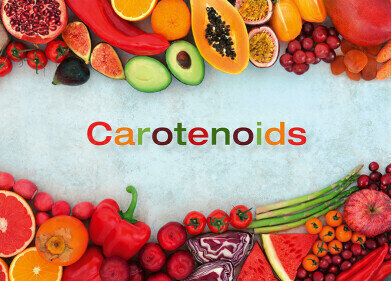HPLC, UHPLC
Enriching Food Products with Nut Shots - Chromatography Explores
Apr 23 2019
Making sure we eat healthily is not always easy. Research suggests that global pressures will have an impact on the worldwide nutritional resources. In a recent report published in Nature Sustainability - researchers suggest that if diets continue on their current trajectories from now until 2015, then the widespread inadequacies in calcium, vitamin D and vitamin E are likely to persist.
These inadequacies are not just in developing countries. In the UK the government has found deficiencies in several nutrients including iron, vitamin D, vitamin B2 along with several other micronutrients. Researchers are looking at ways to increase the nutrient content of our meals - and a recent article in Eureka: Life Sciences reports on the potential of adding nut shots to our diets to help reduce our nutrient deficiencies.
Adding biologically active substances
To try and counter the nutritional deficiencies, the food industry and researchers are looking to create products that include biologically active substances. In the research report - Identification of the Content of Biologically Active Substances in Nut Meals - the Ukrainian researchers divide biologically active substances into three groups which could be used to supplement our current diet. They are:
- Nutriceutics - a group that includes essential nutrients. Essential amino acids, polyunsaturated fatty acids and vitamins.
- Minor food components - not essential compounds, but are important for human physiological functions, for example in influencing the metabolic processes, antioxidant and adaptogenic effects.
- Probiotics - compounds that normalize the activity of the microflora in digestive organs.
The search for new and cheap sources for the above biological active food substances has looked at secondary products of the nut industry, namely nut meal or nut flour. This is basically just very finely ground nuts. But could nut meal bring added goodness to our meals?
What’s in the nut meal?
The team of researchers from Ukraine looked at two types of nut meal, cedar nut meal and walnut meal. The aim of their work was to identify some of the biologically active substances in both of the varieties of nut meal investigated. They utilized a variety of analytical techniques including chromatography. The use of chromatography in helping to improve crops is discussed in the article, HPLC Analysis of Melamine and Related Substances in Fertilisers.
The researchers identified many of the biologically active substances in both the cedar and walnut meals. But the walnut based meal had a higher content of hydroxycinnamic acids - a group of nonflavonoid phenols that are associated with the prevention of diseases including type-2 diabetes and cancer. The team also found omega-3 and 6 fatty acids along with malic and fumaric acids.
So, it seems that the addition of nut meal to foods could possibly enhance our dietary intake of nutrients. However, the team caution that the study has not looked at the potential technological difficulties in adding the compounds nor the possible stability issues of the formulated foods.
Digital Edition
Chromatography Today - Buyers' Guide 2022
October 2023
In This Edition Modern & Practical Applications - Accelerating ADC Development with Mass Spectrometry - Implementing High-Resolution Ion Mobility into Peptide Mapping Workflows Chromatogr...
View all digital editions
Events
ACS National Meeting - Fall 2024
Aug 18 2024 Denver, CO, USA
Sep 04 2024 Chiba, Tokyo, Japan
Sep 04 2024 University of Warwick, Coventry, UK
Sep 10 2024 Rockville, MD, USA
Plastics Recycling World Expo Europe
Sep 11 2024 Brussels, Belgium














